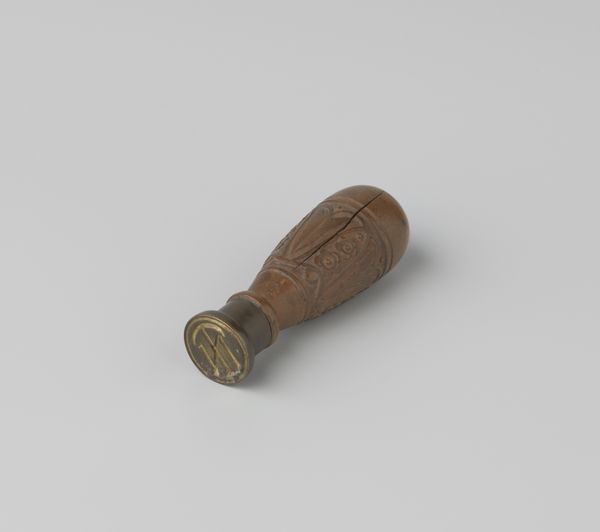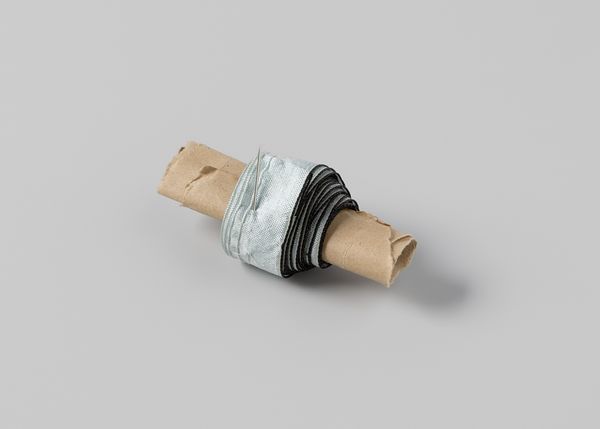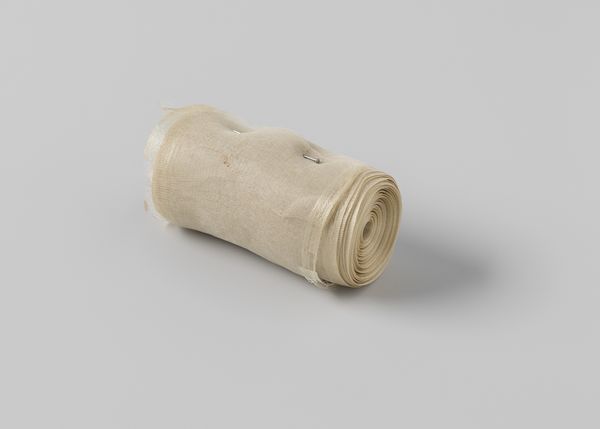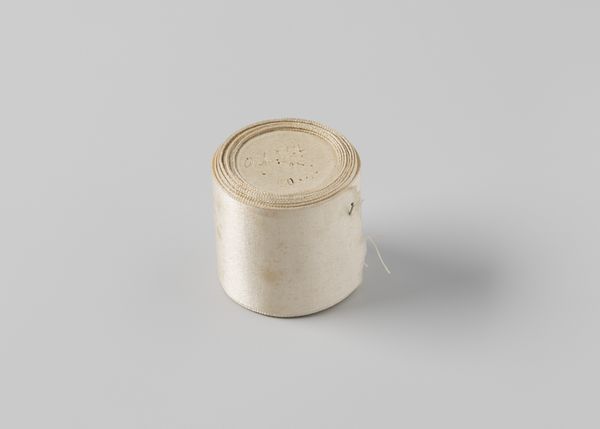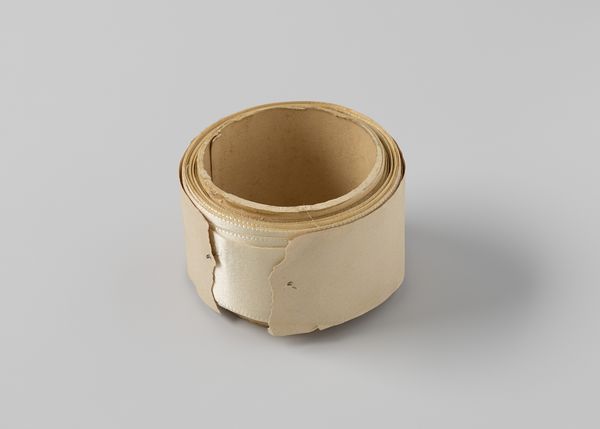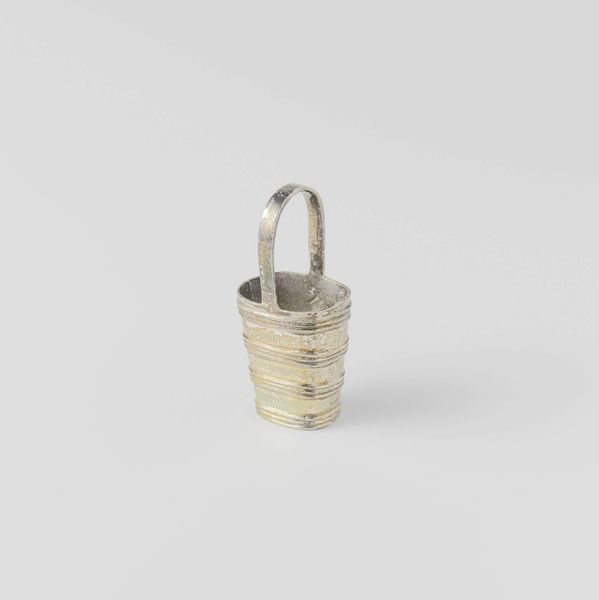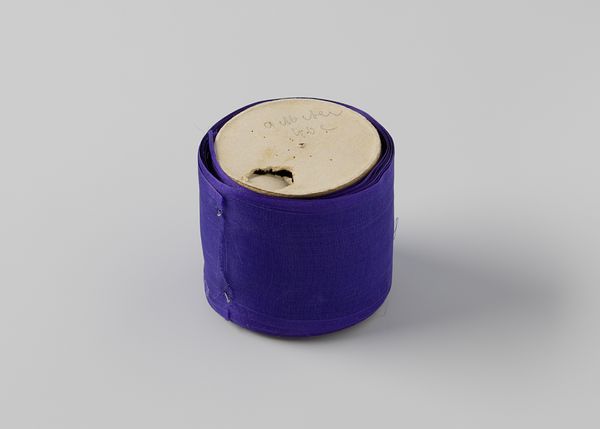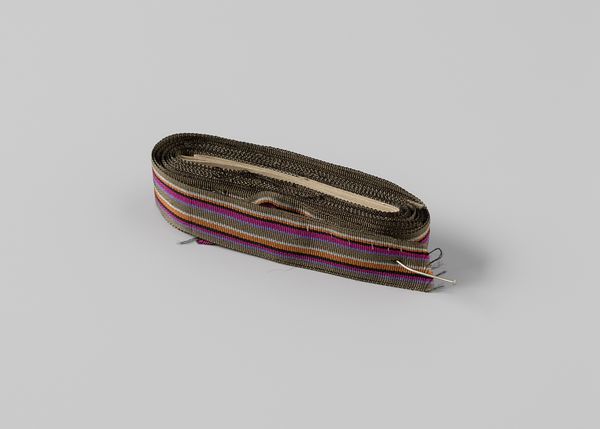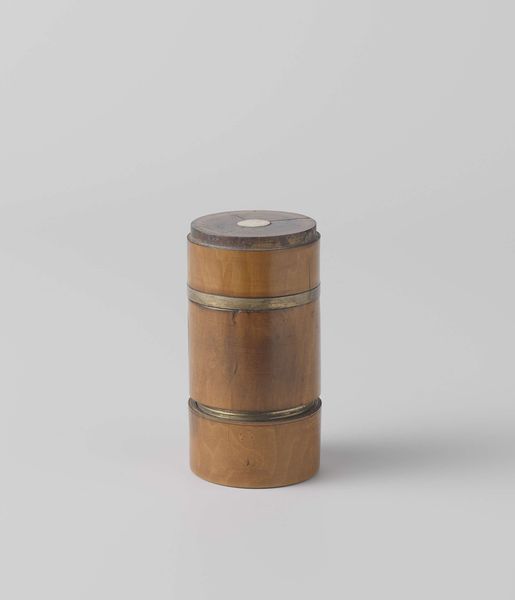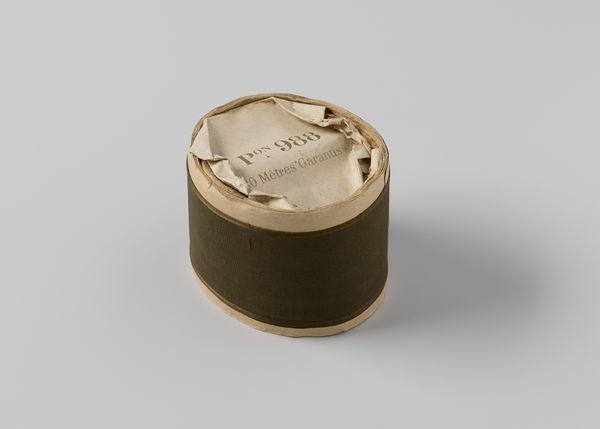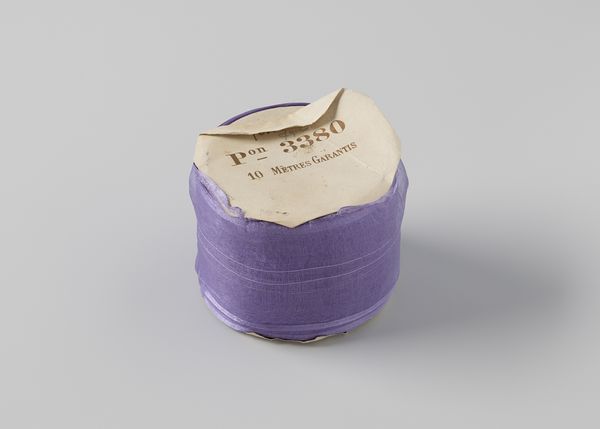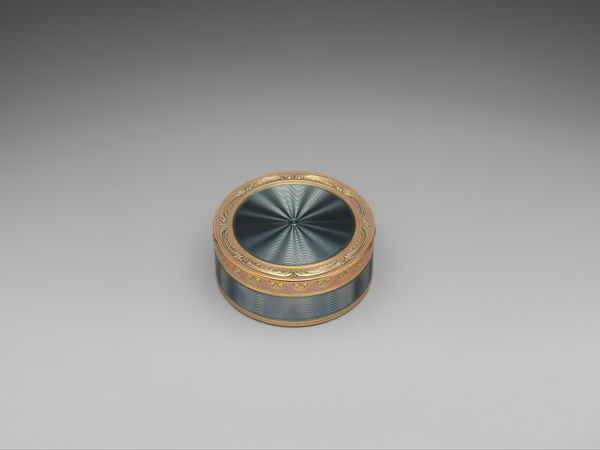
Lint, gestreept, het lint is geel met in het midden drie ingeweven strepen in de kleuren rood, blauw, lichtgroen en zwart en is aan de zijkanten afgezet met respectievelijk lichtblauw en oranje borduursel before 1926
0:00
0:00
fibre-art, textile
#
fibre-art
#
textile
Dimensions: width 1.6 cm, height 2.3 cm, width 2.9 cm, length 3 cm
Copyright: Rijks Museum: Open Domain
Editor: This object is a rolled-up striped ribbon from before 1926, currently residing in the Rijksmuseum. It’s credited to Gustav Schnitzler. The yellow and multicolored stripes lend it a decorative quality. It almost feels…ceremonial, even in its present state. What symbolism can we draw from a simple ribbon such as this? Curator: It’s not just a "simple ribbon." Consider the cultural memory embedded within its weave. Ribbons, across numerous cultures, have served as emblems of honor, affiliation, or allegiance. The colors themselves speak volumes. Editor: In what way? Curator: Yellow often symbolizes optimism, enlightenment; the red, blue, and green woven within…does it perhaps recall national colors, military decorations? Editor: Perhaps! The combination is rather striking. Are the arrangements unique in some way? Curator: The position of these interwoven colored lines certainly looks distinctive, don't you think? Are there certain emotional responses connected with how the lines contrast in color, their placement. Editor: Good point. I hadn't considered the emotional impact of their positions relative to each other, or whether Schnitzler intentionally crafted these striking images. I’m now wondering if there's a connection between how it's arranged and its prior history. Curator: Exactly! Think about that, what emotions do ribbons evoke, think about them during events or attached to objects or awards… Editor: This makes the ribbon seem less a piece of fabric, more like a piece of time encapsulating all sorts of symbolism and history. Thanks for illuminating that!
Comments
No comments
Be the first to comment and join the conversation on the ultimate creative platform.
